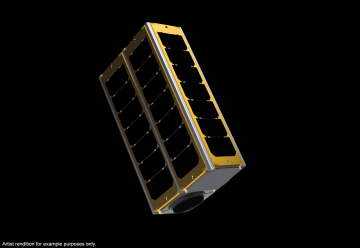Partner with us for your CubeSat design solutions
LIMITLESS POTENTIAL, MINIATURE SIZE
Discover CubeSats, compact satellites reshaping space research. Cost-effective and versatile, they enable various missions from Earth observation to communication experiments. Merida Aerospace leads the way, delivering custom solutions for universities, startups, and organizations. Embrace the future of space with our innovative CubeSat technology.
INNOVATION MEETS AFFORDABILITY
Merida Aerospace embraces innovation and efficiency in equal measure. CubeSats empower developers to focus on the satellite’s primary mission without compromising on quality or exceeding budgets. Our mission is clear – to democratize access to space research and make it accessible to researchers, institutions, and businesses alike.

ADVANTAGES OF CUBESATS OVER TRADITIONAL SATELLITES
CubeSats have emerged as a beacon of innovation, presenting a paradigm shift in the design, development, and deployment of satellites. Unlike their larger counterparts, these diminutive satellites boast a remarkably shorter development lifecycle, empowering us to deliver space solutions with unprecedented speed and efficiency for our clients.

Custom CubeSat Solutions: Tailored to Your Vision
CUSTOMIZATION AT ITS FINEST
From satellite payload specifications to mission parameters, Merida Aerospace custom-tailors CubeSats to address a wide array of missions and objectives. Whether it’s launching constellations for global communication or conducting pioneering scientific research, Merida Aerospace has the expertise to fulfill your vision.

ENGINEERING EXCELLENCE
Backed by a team of seasoned engineers, scientists, and space technology specialists, Merida Aerospace brings together a wealth of experience and technical prowess to deliver unparalleled engineering excellence in every CubeSat.
Small Satellites, Big Market: Sky's the Limit for CubeSats
Posted On February 20, 2019 By Brandon Marcus
The emergence Of a market for CubeSats—or
nanosatellites—has been an important trend to watch over
the last few years, given the increase Of space launch
vehicle companies in the marketplace, such as SpaceX and
others, which provide reduced-cost options to the sky.
The global marketplace for CubeSats is growing at a
compound annual growth rate (CAGR) Of more than 33
percent and is expected to surpass $550 million by 2022,
according to sources. In comparison to their much heavier
and larger siblings, CubeSats have a shorter development
lifecycle and come with a significantly reduced cost
associated with the manufacturing Of the satellite. The
smaller the satellite system, the less cost it takes to
launch it into the sky.
This reduced cost in development and decreased cost
associated with launch make the possibility Of things such
as a global internet and an internet Of things (IOT)
expansion possible. This post takes a 100k at CubeSats,
explores how they can fit together into constellations, and
tracks the development Of 10T and a global internet.
What is a CubeSat?
A small satellite used for research in space, CubeSats can
be made up Of multiple units and are usually no larger than
4 inches cubed. These systems will normally weigh less
than 3 pounds and use commercial, off-the-shelf
components for housings and electronics. This helps
significantly cut the cost associated with developing the
systems. With commoditization Of general use components,
the developer Of the system can put more development
cost into the use case Of the particular satellite. The
design specifications for a small satellite system help
achieve a number Of goals, but the main goal revolves
around cost Of deployment. CubeSats can easily hitch a
ride when there happens to be excess payload capacity on
larger launch vehicles. The reduction Of costs and
development time make CubeSats an option for satellite
constellations in low-Earth orbit.
Satellite Clusters Create a
Different Kind of Constellation
Low-Earth orbiting satellites, also known as LEOs, are
often deployed in satellite configurations known as
constellations. Low-Earth orbit is considered to be an
Earth-centered orbit with an altitude Of no more than 1,200
miles. Constellations are groups Of satellites working
together in communication. These groupings Of satellites
work in conjunction with one another to provide consistent
coverage to the ground below. The satellites must be
positioned in such a way that they overlap for a period Of
time in order to maintain the coverage needed. Many LEO
satellites are needed to maintain this overlap coverage.
You might be more familiar with satellite constellations
than you think. If you’ve ever used your cell phone to
navigate from one location to another, then you’ve
accessed the Global Positioning Systems (GPS) network Of
satellites. The GPS network was launched more than 40
years ago and includes 31 satellites operated by the United
States Air Force and owned by the federal government. GPS
provides location capabilities to U.S. military, civil, and
commercial users all around the world. If you have access
to a GPS receiver, such as your cell phone, then you have
access to an internet constellation for your own use.
A number Of these CubeSat constellations are in
development. Iridium Next is creating a system for cockpit
safety for airplanes and ships. Boeing and are both
developing broadband capabilities to be used globally.
There is a good amount to be gained by using CubeSats in
constellations. With the increase Of the global megatrend
JOT, and the increasing demand for global internet, the race
for low-Earth orbit will continue to heat up through the
upcoming few years.



